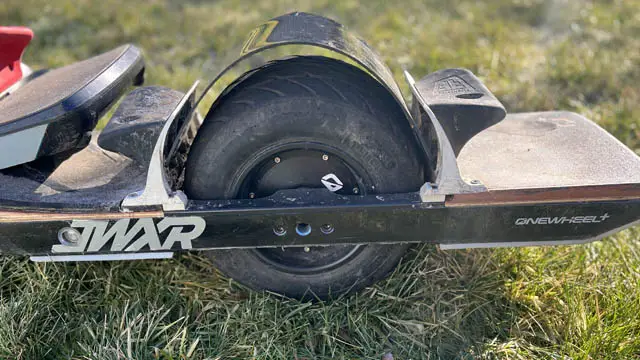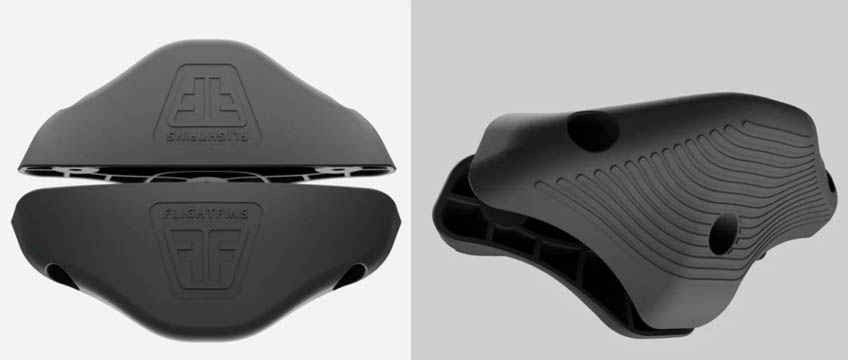
“Lets talk FlightFins. After a little over a year of use, I found there’s essentially two types of riders when it comes to FlightFins – those that love them, and those that don’t. Why are they causing such divided opinions among Onewheel riders? In this article, we will take a closer look at the design, benefits, and limitations of FlightFins, as well as real-world usage experiences to help you determine if they’re the right choice for you. Whether you’re a new rider looking to buy or a veteran rider, this article will provide the scoop for you.
If you are new to riding and are not sure what they are, FlightFins are a popular aftermarket accessory for Onewheels. The full flight set up is comprised of 3 parts: the rubber fins, the fender and the nylon shield. You can purchase portions of the system and mix and match parts to personalize your Onewheel. I cover the Full Flight system in this post. The main intent behind Flightfins is to keep you (the rider) on the board without completely locking you in. They aren’t quite like bindings. They give more control in turns, jumping carving but they still allow you to bail from the Onewheel if need be.
Why I bought Flightfins For 2 out of 3 boards

Trail riding on a Onewheel is great. After you ride your favorite trail, you tend to anticipate and know where all the drops, obstacles and chunky terrain is. After you ride that same trail several times, you want to explore new trails or places off the trail. This is why I love Flightfins. I feel prepared for the unexpected.
What I Like about Flight Fins
I can ride trails with or without Fins but with them I feel as though you have an advantage on chunky terrain. What I find the most challenging without FlightFins is repeated chunky terrain. Riding some seriously bumpy terrain can sometimes vibrate your feet off the footpads at times. FlightFins just keep you locked in enough to feel secure and to keep on blasting down the train. There’s times when you are weightless for a split second and need to reposition those feet but then another bump puts you back into that weightless state. This is why I am a big proponent for at least one fin at the tail side of the board.
I also like to ride without a fender. Personally, I think if you are trail riding without flightfins, you have a potential to placing your foot on the top of a moving wheel which could cause some serious damage. Now I have never done this however being weightless from a drop or a bonk, it is definitely possible to slide your rear foot over the wheel without intending to do so. Landing in this manner would be painful.
Flight Fins also just let you lift the board up when there’s nothing around. With a Onewheel, the only way to get air is to bonk or bollie from an object on the trail. With fins however, you make it your personal mission to jump and clear random obstacles on the path.
What I dislike about Fins
If I was in the market today for FlightFins, I would probably just go with Minis. They are small enough and keep your feet in place. (They also can hide an air tag so its a great way to track your Onewheel). The reason why I’m a fan of minis is because they aren’t uni-directional like the larger fins. Setting my board up with FlightFins limits the rider to my stance (Goofy stance). Its a 50/50 chance you have the same stance and if you don’t you have to ride the board in an uncomfortable manner to clear the fins or ride it backwards. This is why I keep one board without fins.

With FlightFins you will have a board that is configured for either goofy or regular stance. With Minis, anyone can hop on the board and ride.
Conclusion
Here are my final thoughts on FlightFins:
- They let you explore more of the trails you already explore.
- Avoid the polycarbonate fender as it is more likely to crack on roll overs
- If you want to share your board, get Minis
- If you don’t go with FlightFins, get a rear wedge at the very least.
